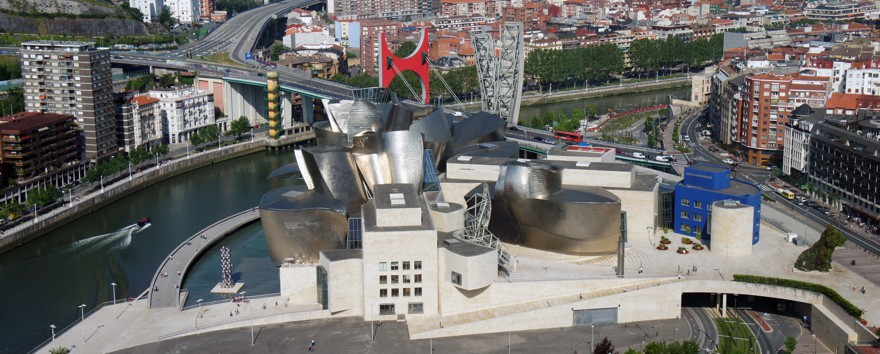First there was the Bilbao Effect, a quasi-spiritual conviction that erecting architecturally compelling museums would bring in droves of tourists and revitalize woebegone industrial cities. Now we’re starting to what you might call the High Line Effect (after New York’s High Line park).
This is perhaps a touch unfair: Parks are not museums and landscape architect James Corner’s recent works shouldn’t all be labeled High Line 2.0 just because he designed the original. Nevertheless, consider the dek for Eric Jaffe’s “Reclaiming the Public Square,” which appears in the July/August 2015 issue of The Atlantic: “Cleveland is the latest city to call on James Corner, the landscape architect behind New York’s High Line, to revive an urban park.” The High Line Effect may be a blunt narrative instrument, but it is powerful nonetheless.
The issue in Cleveland, as Jaffe points out, is that Public Square—yes, that’s its name—isn’t very public. The square is divided into awkward—and often asphalted—parcels by a series of thoroughfares that prevent its constituent parts from adding up to much. To remedy this situation, Corner initially planned something of a High Line redux: a park elevated above the streets. This plan, however, was supplanted by a new configuration that narrows certain streets and builds “two boomerangs nearly meeting at the tops of their arcs.” These two park halves are intended to serve a variety of civic functions in both the summer (beer garden) and winter (skating rink).
“The public realm in the city is the most urgent space for democracy to play out,” Corner told Jaffe. Indeed, this is perhaps the most important difference between the Bilbao Effect and what Corner is attempting to achieve. The construction of Bilbao-style museums attempts to revitalize cities by bringing in an influx of tourists. This is meant to produce benefits for the locals through a form of trickle-down economics—the tourists have to eat and sleep somewhere, after all. This, as the foreign policy critic William Blum writes in Killing Hope, is “the principle that the poor, who must subsist on table scraps dropped by the rich, can best be served by giving the rich bigger meals.” The construction of parks and public spaces, however, puts the interests of residents first. The High Line may be popular with tourists in New York but it serves to make the city more hospitable to its inhabitants. Corner’s Public Square project will attempt to produce a similar result.
The High Line cannot simply be transposed. Just ask Corner, who told Jaffe it’s “irreproducible anywhere else without significant loss of origin and locality.” Its approach to urban renewal, however, can be generalized. A just society must put the needs of its citizenry over those of an international moneyed class. The welfare of the masses cannot be merely ancillary. While the creation of parks may not benefit all residents equally—gentrification is not without its downsides—it is still less corrosive than the debt-laden construction of white elephant museums. Thus, if the Bilbao Effect is to be replaced by something called the High Line Effect, let it have nothing to do with architecture: let it instead stand for an effort to make municipalities whose public spaces stand as symbols of their inclusivity.
